A baby’s sleep schedule is packed with sleeping, sleeping, and more sleeping. As a sleep-deprived adult, you have to envy them. They sleep all night, occasionally waking up now and then, and take many naps a day. However, with time, a baby may end up dropping naps. Usually, a baby under six months takes around three naps a day, and the length of those naps can vary.
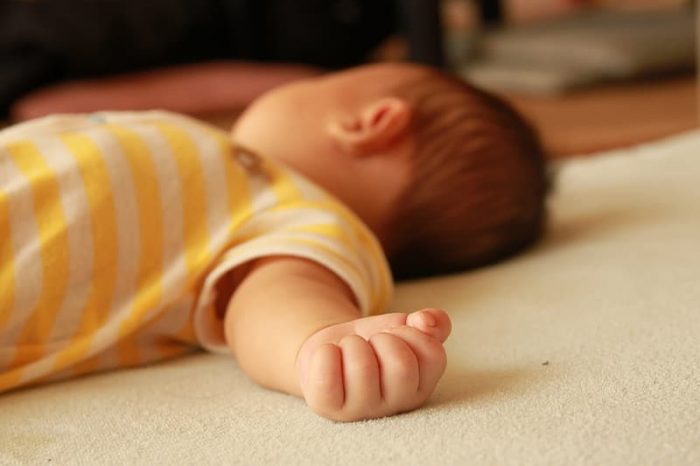
But during the 6-12 month phase, the baby may stop dropping their third nap. Instead of three naps, they may have two naps. You may notice this when the baby’s naps shorten, or they struggle on one of their naps. When that happens, it’s time to eliminate the third nap. So, the question remains, when do babies drop the third nap?
When it comes to baby sleep, the 3rd nap is always the hardest to drop. You may wonder if your toddler is ready to drop the 3rd nap. The problem however, is that if you misinterpret when to drop it, chances are baby sleep will be affected, and sleep regression can happen. There are a few signs your child is ready to drop the third nap, and if you’re looking to change baby naps, then we’ll discuss it here.
The Nap Transition
There is a nap transition that happens with a baby, and usually, this happens over time. A nap transition is when baby naps start to become longer. Nap transitions mean longer, but fewer naps. As a child gets around 9 months of age, they may have nap transitions that go from about an hour or so, to nap transitions of over an hour and a half. These nap transitions can be messy, since the wake time is affected.
If you notice your baby waking up later from their naps than usual, and they spend more time taking an afternoon nap, then you may want to consider dropping the 3rd nap.
The problem with dropping the third nap though is your wake time will be out of wack. Some parents report early morning wake times, or wake times that are far strange. Some parents may have wake times that are late at night, where the child is up for a couple of hours before falling asleep once again.
Early morning wakings are common as well, because with the baby waking up, it may mean that they’re getting up earlier. Some babies also may have trouble falling asleep if their awake time is a bit different.
When engaging in nap transitions, the idea is to adjust and move bedtime, along with the awake time. Sometimes, the 3rd nap may take longer to drop than it should.
You have the third nap in place for younger children because with a 3rd nap, it’s short, but gets them enough sleep. Some children need a 3rd nap because if you don’t have that 3rd nap they get cranky.
But as your baby gets older, they may not need that early morning 3rd nap, and instead have an afternoon nap, or even move bedtime earlier. The 3rd nap is the hardest to drop though, since it oftentimes is a major transition.
A lot of parents think they have to drop the 3rd nap at certain ages, but that isn’t the case. If you drop the 3rd nap too early, they may get fussy and continue with strange wake times. If you don’t drop the third nap though, they may get fussy. The key to manipulating when you drop the third nap is ultimately based on what your child needs.
Some children also will naturally start to drop the 3rd nap. As a parent, you should consider this nap transition over time, since they may do well without the 3rd nap.
There is also the downside to when you drop the 3rd nap, sometimes you don’t know when you should get rid of it. Well, determining the 3rd nap time and the nap transition is important, since it will help those who are looking to get their child on a good sleep schedule taken care of, and so that they can stay up longer, and get the sleep they need.

Signs Your Baby Is About To Drop Their Third Nap
When do babies drop the third nap? Many signs signify that your baby is ready to transition from three naps to two. Here are a few of them.
- Their Age
As mentioned, a baby drops their third nap between 6-12 months, with nine months being on average. By about 9 months, they may fall asleep a little bit later, and morning wakings become less. However, some may have morning wakings though, but they may be sleeping throughout the night. If you notice the wake times changing, or if the wake times start to suddenly adjust, you may want to consider that it’s time to drop the 3rd nap. 9 month olds start to show this transition to 2 naps the most, but sometimes, 12 month olds may show the transition to 2 naps then, or even 6 month olds may transition to 2 naps. No matter how many month olds your child may be, the transition to two naps may need to happen, and you may want to consider too drop the 3rd nap at some point.
- The Frequency Of Naps
If you’re noticing the naps growing shorter, or if the baby takes longer to fall asleep and ends up crying, this can be a sign that the baby’s ready to drop the nap. Just because you have a couple of days of this, it doesn’t necessarily mean the baby is ready. If you have this for over a week, that’s more substantial evidence. At this point, the nap transition may be telling you to move bedtime and also to adjust when the child should fall asleep. If you notice they don’t fall asleep during one of the naps, or maybe they are engaging in a bit of longer morning wakings, then it might bee a sign that it’s time to drop the 3rd nap. If you see their bedtime changing and they aren’t going to bedtime earlier, then also you may want to consider the idea that it’s time to drop the 3rd nap too.
- The Baby Is Refusing Their Third Nap
If the baby is always refusing to take a third nap, that’s a sign. Also, if you notice there is an earlier bedtime happening and less morning wakings, they may not need the third nap. Sometimes if your child refuses to fall asleep, that may be a sign to drop the 3rd nap. Of course, you can never be too careful when it come to drop the 3rd nap instances, and that’s because if you don’t properly move the bedtime and adjust morning wakings, it can affect their awake time.
- Bedtime Blues
If, by the third nap, the baby is having a hard time falling asleep for bedtime, this can be a sign that it’s time to drop that nap like it’s hot. Also, if your baby is always waking up in the middle of the night and keeps awake. They may not even be screaming, but instead playing and having a good time. Or they may be waking up early, and waking the parents along with them!
For some parents, adjusting the early morning wakings if you drop the 3rd nap fixes the problem. Those early morning wakings start to be earlier and earlier, and sometimes if those early morning wakings aren’t nipped in the bud, they may start to get up earlier. If you’re trying to adjust these early morning wakings, especially in 9 month olds who are ready to drop the third nap, you should consider the idea to move bedtime, and adjust it so that morning wakings are less.
For some parents, the solution is to move bedtime earlier. When you do move bedtime earlier, it does create the chance that morning wakings may happen more, but if you’re used to morning wakings, if you move bedtime earlier these morning wakings aren’t as bad. You may want to consider the aspect of move bedtime earlier as well if you can’t get the child to nap during the afternoon, but they still take a morning and early afternoon nap.
Daytime Sleep Lessening
If you notice daytime sleep not happening as much, that might be a sign that a nap transition happens. A nap transition usually means they don’t need as much sleep, and if you notice they are not engaging in as much daytime sleep, or they don’t want to do daytime sleep, that’s a sign that you can begin the nap transition.
But, there is the case of 6 month old sleep regression that does happen with this. 6 month old sleep regression, 8 month old sleep regression, and 9 month old sleep regression are ultimately common moments when the sleep begins to be a problem, and the child may be sleeping less.
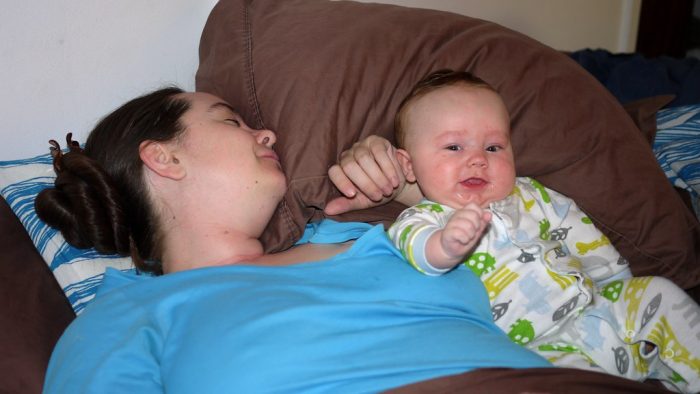
When It’s Not Ready to Drop The Third Nap
With that said, there are some reasons why you wouldn’t want your baby to drop the third nap. These include:
- All Sleep Has Worsened
If your baby is having trouble sleeping in the day and night, this may be a sign that the baby is going through an illness, traveling, teething, having a sleep regression, or just going through a phase. Usually, your best bet is to stick to a consistent schedule and see if that passes. Sleep regression is a common thing that happens when you think it’s time to drop the third nap. Sleep regression means that they are not on the correct schedule, and they end up staying awake way more. If you drop a nap and you start to notice sleep regression taking place, it may be a good sign to not drop a nap just yet.
The transition to 2 naps should happen somewhat smoothly. It isn’t always easy to transition to 2 naps, but for those who are ready to drop a nap, this transition to 2 naps is usually not too bad. Also, if you begin to notice their awake time is wonky and still off, it may not be time for them to transition to 2 naps. If you notice early morning wakings, or your child is awake during the early morning, an earlier bedtime may work, but if there is too much fighting when you drop a nap, it may not be time to drop the 3rd nap yet.
- Your Baby is Changing
If your baby is learning how to crawl, sit up, or having another development, it’s harder to drop a nap. Wait until the baby makes their change, then do it. Another example of change is if the baby is growing a tooth. The pain of developing a tooth is not the time for you to change the baby’s naps. You can trust us on that one. You’re just going to stress your baby and yourself, trying to make them do many things at once. Babies are not the best at multitasking. Neither are adults, but that’s different.
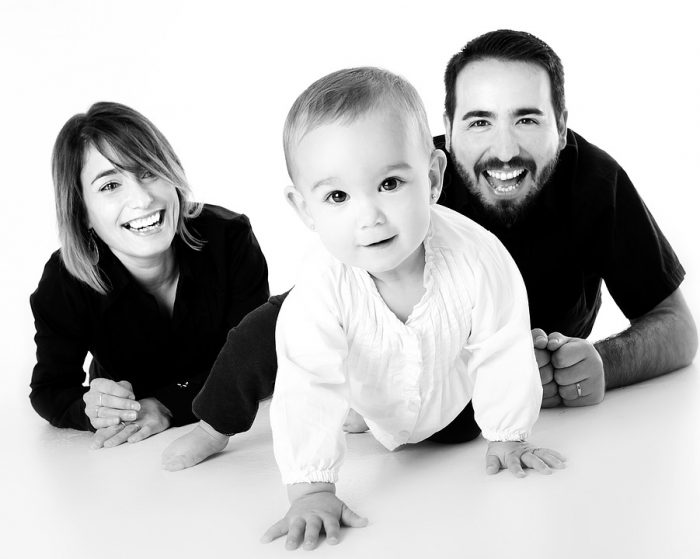
- The Naps Are Short
Before six months, some babies will take naps that are short and sporadic. Trying to fix a baby’s nap time is more of a challenge and not worth it. Once a baby is consistently napping longer and sleeping well, then you can do it. Usually, the naps should be around 1-2 hours, but with any baby, it can differ.
How To Drop The Nap
If you want to drop the third nap, you do need a little patience. It doesn’t happen overnight, and with the slow change, you can make for a happier baby. Here are a few things you can do.
Move the bedtime earlier. With fewer naps, your baby can be able to sleep longer at night. Sometimes, you may take your baby to bed as soon as 6 PM. Slowly reduce the bedtime by 15 minutes each day, and you’ll be able to make the transition smoother.
Look at the wake times. Around the period when babies usually drop their third nap, they have wake times that last about 2-3 hours if they are 6-8 months. For 9-12 months, this is usually2 ½-3 ½ hours.
It is time to wean the baby from the third nap. Every week, reduce how long the rest is. For the first week, the third nap should be around 20 minutes. Then, you can cut it to 15 minutes next week. Then 10, and so on. A small cat nap is fine too. As the rest decreases, adjust the bedtime accordingly.
Meanwhile, extend the first and second nap along with shortening the third. Make sure the baby isn’t sleeping enough and not too much, so their bedtime becomes short. If so, you may need to adjust the bedtime.
When making progress, do it weekly. Daily progress is a little too inconsistent. There may be days when a baby regresses, and it’s only temporary and not a sign of something worse to come. Write down everything and review the patterns every week, and then you can make changes if needed.
If all else fails, it’s best to talk to a pediatrician or a sleep doctor and see if your baby needs to drop that nap. There is nothing wrong with letting them nap if they want to. Forcing a change when they aren’t ready will make the problem a whole lot worse.
Using Sleep Training
Sleep training is a good way to master the nap transition, and to drop a nap. Early on, you can probably drop a nap without too much sleep training, but if you do struggle when you try to drop a nap, then you may want to consider adjusting the nap transition.
With sleep training and nap transition, daytime sleeping is changed. You move bedtime in order to have your child night sleep.
Sleep training is used in a lot of cases when daytime sleep needs to be adjusted. When you move bedtime back a little bit, it will help improve night sleep.
When you do move bedtime to reduce daytime sleep, you’ve got to do it in increments. Try to move bedtime by small windows, and reduce there daytime sleep by a bit. If you move bedtime slowly but surely, you will be able to reduce daytime sleep, and drop a nap.
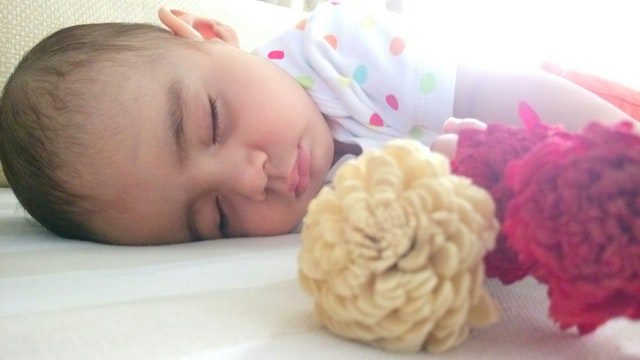
The Future
Naps continue into toddlerhood. Eventually, a toddler will drop their second nap, and then they may have only one nap in the afternoon. Afterward, they end up losing that nap and sleeping like the rest of us. With that said, there is still nothing wrong with taking the occasional nap. As an overworked parent, you can relate to that.
Babies Drop Third Nap Frequently Asked Questions (FAQs)
What age do babies go from 3 naps to 2?
When do babies drop the third nap? The nap time of babies changes as they grow older. From three naps, they will likely go down to two, as they reach the age of six to eight months. Usually, there will be one long nap and one short nap of fewer than 45 minutes.
How to know when the baby is ready to drop a nap?
Dropping a nap is as healthy as eating or taking a poop for babies. It will just come. And so, to recognize if your baby is ready to drop a nap, you will notice that your little is fighting bedtime at night, he will have trouble sleeping during nap schedule, and he will wake up at the wee hours in the morning, all energized.
How long does your three-month-old nap?
A 3-month-old baby must take at least three to four naps a day. Each rest will last to about a minimum of one hour to at most, four. Just remember that he must not take a nap after 6:30 PM, or you’ll have a bedtime problem.
At what age do babies drop to one nap?
Dropping a nap means one thing. Your baby is growing each day and getting bigger. They usually drop to one rest by the time they are fifteen to eighteen months old.
How late should the baby’s last nap be?
The answer depends upon how your day goes, but usually, a child should have his last nap before 6:30 PM. If you don’t mind staying up late, then it would be fine. Otherwise, don’t let your baby go to a nap by that time.
When should you start a nap schedule?
You should start a nap schedule as early as you can. Some parents do it on the baby’s third month while studies say that a regular nap schedule should start on the baby’s fourth month.
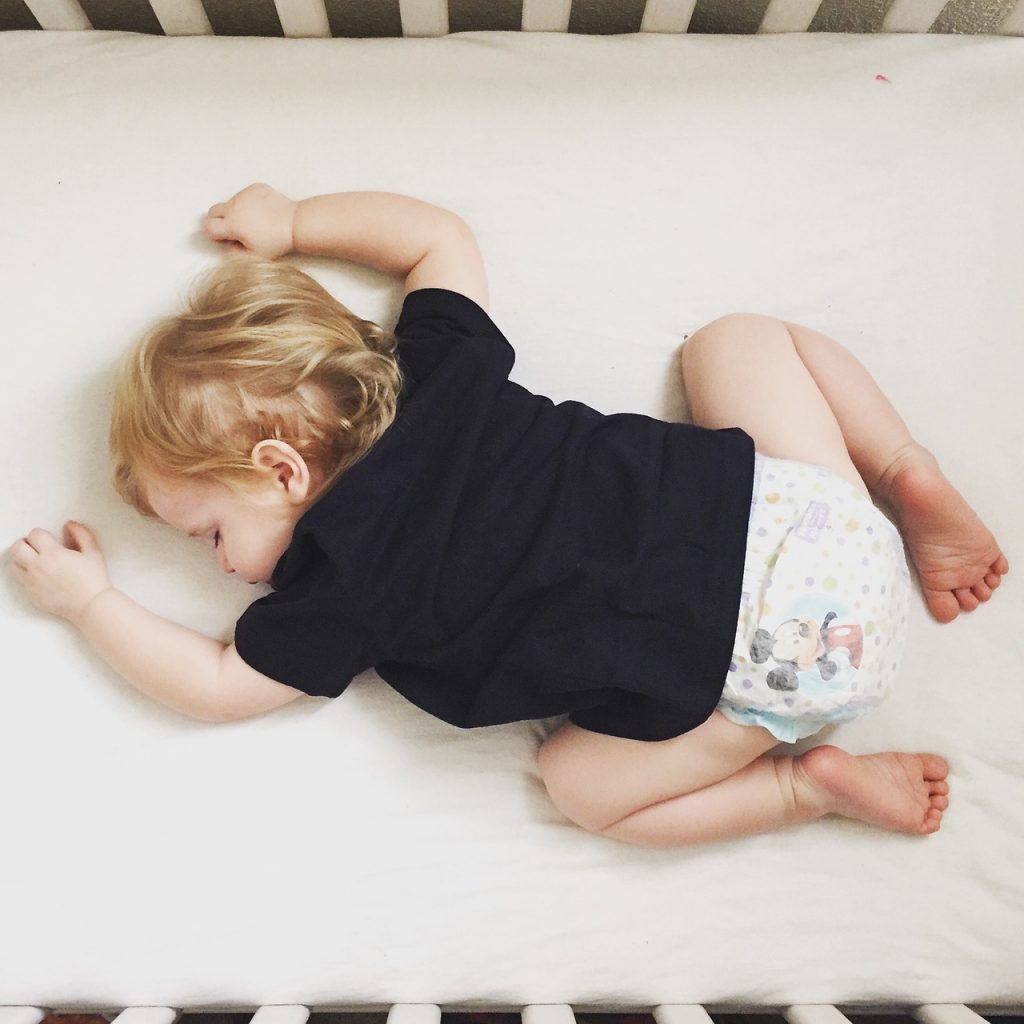
What age do babies give up morning nap?
You may think that nap time (three to four a day) is permanent and constant. Well, think again. Babies are sure to give up their morning nap by the time they reach eighteen months.
At what age do babies go to one nap a day?
As the baby grows, he is bound to drop his nap time during the day. When they reach toddler age, their nap time goes down to one. That’s when they reach 1.5 years old.
Should you wake a baby from a nap?
Waking babies from naps may not seem like a smart move, but there are acceptable reasons for doing so. It depends upon why you need to wake up your baby. When it is getting dark, and he is still sleeping, then you should wake him up or else he will be up all night long.
Do daytime naps affect night sleep for babies?
In a way, yes. It does affect night sleep for babies. Make sure that you don’t let your baby have a nap that is later than 6:30 PM.
How long should a baby’s morning nap be?
Newborn babies need longer naps because, during that time, their brain is developing. As for bigger babies, the nap time will vary from 45 minutes to four hours.
Babies Drop Third Nap Other Resources
TheBump: https://www.thebump.com/a/baby-dropping-naps
LittleOnes: https://www.littleones.co/blogs/our-blog/nap-transitions-how-and-when-your-baby-will-drop-their-naps
BabySleep101: https://babysleep101.com/2018/09/the-3-2-nap-transition-when-and-how-to-do-it/
DISCLAIMER (IMPORTANT): This information (including all text, images, audio, or other formats on FamilyHype.com) is not intended to be a substitute for informed professional advice, diagnosis, endorsement or treatment. You should not take any action or avoid taking action without consulting a qualified professional. Always seek the advice of your physician or other qualified health provider with any questions about medical conditions. Do not disregard professional medical advice or delay seeking advice or treatment because of something you have read here a FamilyHype.com.